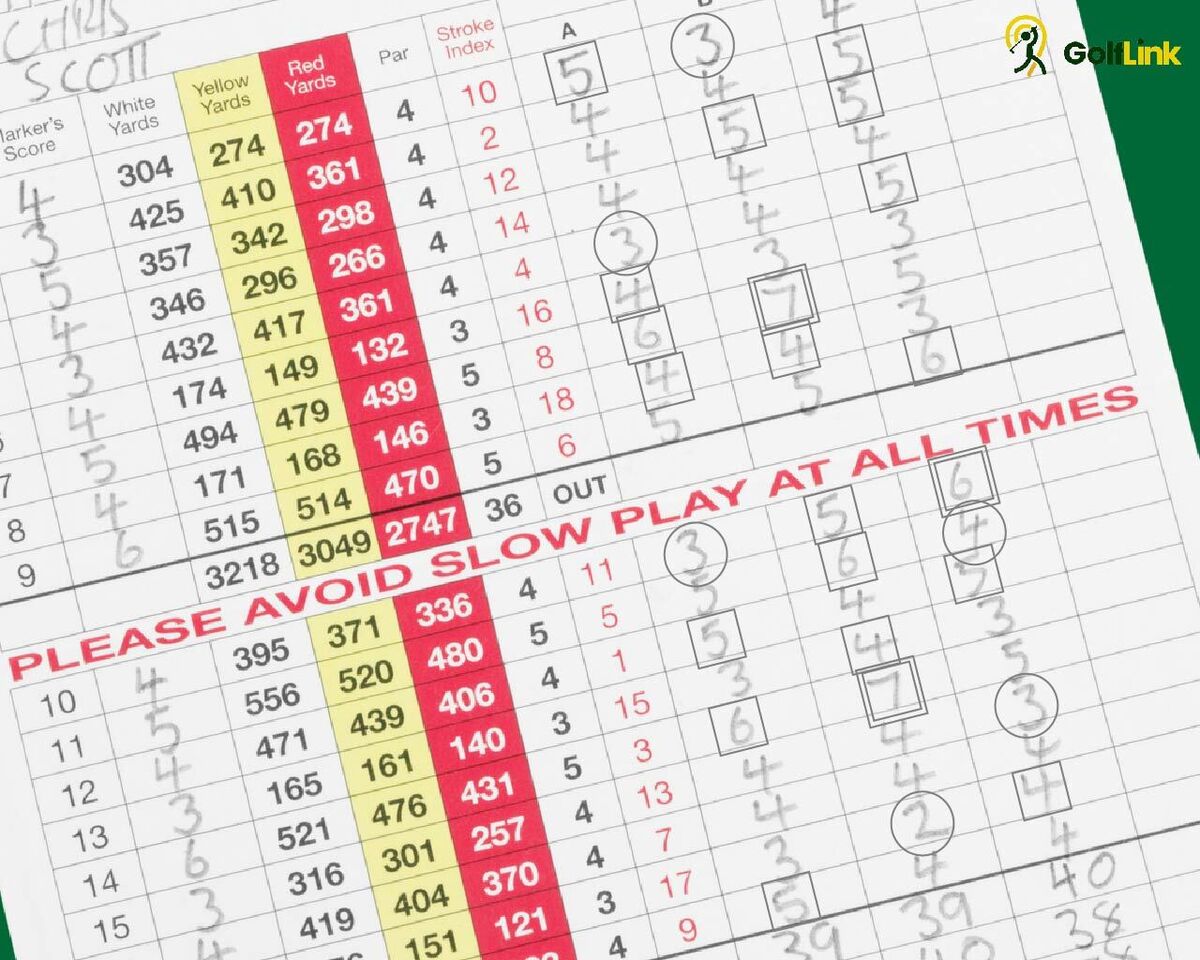Quick Guide to Golf Scoring Terms: Par, Bogey, Birdie & More
Easy to understand definitions for every golf scoring term you need to know!

Par, bogey, birdie, eagle. These golf scoring terms can sound like a foreign language if you’re not familiar with them. Check out this list of definitions for every golf score a player can make so you can become fluent in this golf scoring language.
Golf Scoring Terms and Definitions
- Par: The score an expert player is expected to make on a hole given normal weather conditions and allowing for two putts on the green. On a Par 4 hole, an expert player is expected to take two shots to get the ball on the green, and two putts to get the ball in the hole, for a score of 4. Par is the foundational golf scoring term because most other terms are in relation to par.
- Bogey: A score of one over par on a hole. If a player makes a 5 on a Par 4 hole, they have made a bogey.
- Double Bogey: A score of two over par on a hole. For example, a score of 6 on a Par 4 hole.
- Triple Bogey: A triple bogey is a score of three over par on a hole. Making a 7 on a Par 4 is a triple bogey.
- Quadruple Bogey: A score of four over par on a hole, such as an 8 on a Par 4.
- Birdie: A score of one under par on a hole. If a player makes a 3 on a Par 4, they have made a birdie.
- Eagle: A score of two under par on a hole. If a player makes a 3 on a Par 5, they have made an eagle.
- Double Eagle: A double eagle is a score of three under par on a hole, such as a score of 2 on a Par 5.
- Albatross: Albatross is a synonym for double eagle, and is a score of three under par on a hole.
- Condor: A condor in golf is a rare score made in golf, but a golf scoring term nonetheless. A condor is a score of four under par on a hole, and because Par 5s are the highest pars on the vast majority of courses, it presumably requires holing a tee shot on a par 5 to accomplish the rare feat.
- Hole In One: A hole-in-one in golf is the term used when a player completes the hole in one shot, holing their tee shot. Since Par 3 holes are the shortest holes, most hole-in-ones happen on Par 3s, where expert players are expected to get the ball on the green with their first shot.
- Ace: Casual term for hole-in-one
- Deuce: Casual term for a score of 2 on any hole.
- Snowman: Slang term for making an 8 on any hole, referencing that an 8 looks like a snowman.
- Net Par: When a player’s score minus any handicap strokes assigned for that hole equals the par of the hole printed on the scorecard, it’s a net par.
Adding it Up

Adding up golf scores becomes quite easy once you speak the language of golf scoring. By adding the total number of strokes over or under par, then adding that number to the par for the course, you get the total score.
To make it even easier, players can track each score on the scorecard using one circle around the hole’s score to indicate a birdie, one square to indicate a bogey, two circles for an eagle, two squares for a double-bogey, and shaded circles or squares to indicate double-eagle or triple-bogey, respectively. From there you can add the squares, subtract the circles, and find out the exact score in relation to par.
It’s the numbers that ultimately count in golf, but knowing the correct scoring terms earns respect among other golfers and makes understanding the game easier.